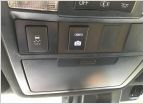-
Welcome to Tacoma World!
You are currently viewing as a guest! To get full-access, you need to register for a FREE account.
As a registered member, you’ll be able to:- Participate in all Tacoma discussion topics
- Communicate privately with other Tacoma owners from around the world
- Post your own photos in our Members Gallery
- Access all special features of the site
Development of DIY Electronic Upgrades
Discussion in '3rd Gen. Tacomas (2016-2023)' started by LostTime77, Feb 1, 2020.
Page 7 of 8
Page 7 of 8


 Need help installing Anytime Camera
Need help installing Anytime Camera Keeping the hard cover black
Keeping the hard cover black BeatSonic Camera installed
BeatSonic Camera installed Interior Door Diff. Sticker
Interior Door Diff. Sticker Front Caliper Type?
Front Caliper Type?